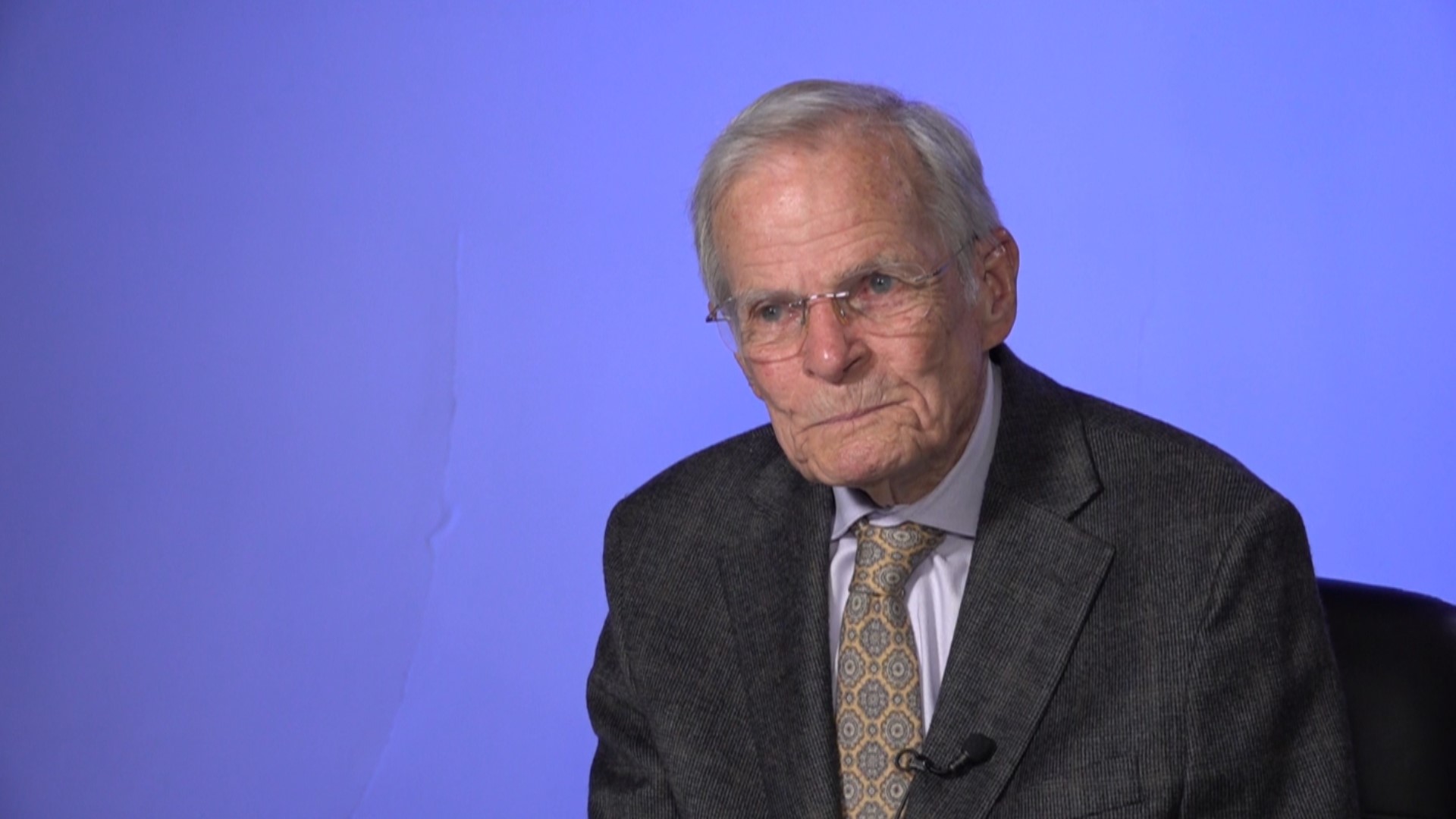KNOXVILLE, Tenn. — In 1981, a mystery started unfolding. The Centers for Disease Control and Prevention published a report that described requests for pentamidine to treat a deadly disease among five young men in Los Angeles. Soon after, they noticed a spike in cases of a rare disease associated with immune suppression in New York.
Health leaders at the time had little idea they were watching the first cases of the AIDS epidemic unfold. They likely had no clue about the impact of the epidemic on the LGBTQ+ community, and how it would shape the community's relationship with government leaders for decades.
On the front lines of that story was WBIR anchor emeritus Bill Williams.
"1987 was when I did the first report and, of course, AIDS was not even, we weren't aware of AIDS until the early 1980s. And then, it became an epidemic and people were scared to death. Absolutely scared to death," he said.
The legendary East Tennessee journalist had an obligation to tell the story. But as he spoke to doctors and brought cameras to different corners of the community, he spoke out of more than a professional obligation. As the AIDS epidemic swept through communities across the U.S. with nary a word from the nation's leaders, his son was also diagnosed.
"I wanted to do the report because my son, my son, Mark, was living with AIDS. Discovered it the same year, 1987," he said.
A stigma developed nationally during the AIDS epidemic. The illness that, at first, seemed isolated to a few individuals in major cities had spread, prompting fear. In 1987, the CDC launched a national campaign to increase awareness and understanding of AIDS and to prevent HIV infection.
By then, myths were spreading that HIV could be spread by mosquitos, and people diagnosed with HIV often became pariahs. For example, in 1985, Ryan White, a teenage hemophiliac living in Indiana, contracted AIDS from a blood transfusion. Parents in his community feared he would expose their children to AIDS, resulting in Ryan being barred from attending school, according to the CDC.
"I learned a lot. And, of course, it was very, very, again, it was very, very close to me because my son was living with AIDS and eventually died of AIDS. So, that was a very personal thing that I needed to know more about, and I needed to let our viewers know about," Williams said.
In East Tennessee, the story brought Bill Williams to Dr. Richard Rose. He was one of the few doctors in the area who treated AIDS, and he asked Rose questions about the illness hoping to collect facts and stop myths from spreading.
"He was so caring and so giving. He was caring so much that he couldn't do that forever. He finally had to give up that kind of practice because all his patients were dying, and it was just too hard on him," Williams said. "I tried to make very clear in my reporting was he couldn't get AIDS by shaking hands or sitting next to somebody or by breathing the same way. You cannot get AIDS that way."
Many people in the LGBTQ+ community credited Williams for his reporting. He shared information about a story that most leaders of the era refused to talk about.
"That is true pioneering. No one else was reporting that story. At the time, Ronald Reagan wouldn't say the word, 'AIDS.' We had Bill Williams educating us. It wasn't just gay people — it was the entire world and we were allowed to die and he knew that it mattered, and it affected him personally," said Christopher Hamblin, an LGBTQ+ activist. "I don't think he gets enough credit."
In 1987, the AIDS Coalition to Unleash Power (ACT UP) was founded. The activist organization organized thousands of protests, and "die-ins" became a signature tactic to raise awareness and push for action to prevent the spread of AIDS.
The U.S. Congress did not create the National Commission on AIDS until Sept. 18, 1989. By 1990, more than 100,000 people died from AIDS, according to the CDC. A third of those were reported during 1990, and the illness had emerged as a leading cause of death among young adults in the U.S.
Mark Williams died in the early 1990s. Before he died, he asked Bill to go shopping for a casket and asked his father to put together a video for his funeral.
"I just played it last night, again. Of course, it brings tears every time, but from the time he was a tiny baby until the very end, he was an extraordinary, extraordinary man. He was good-looking. He was talented. He could sing. He could speak. It scared me he was so smart. I'm very, very proud of my son," he said.
Now, an HIV diagnosis is not the death sentence it once was. There is no cure for it, but the illness can be controlled. The CDC said most people can get the virus under control within six months. Treatment can come in pill form for people who are eligible or through shots if people are virally suppressed or if they have an undetectable viral load.
"I like to think it was the fact that my son, Mark, and his dealing with AIDS and his death because of AIDS and my ability to tell the story of AIDS and a part of the story of Mark — my ability to do that made a difference in this community and in this world. It made it a little bit more understandable, a little bit more acceptable," Williams said.
"God wants us to love and be loved," he also said. "And, I remember an old preacher saying this — 'God don't make no junk.' My son was a marvelous, marvelous man. He died of AIDS because he was homosexual. He was loved by God because God don't make no junk."


